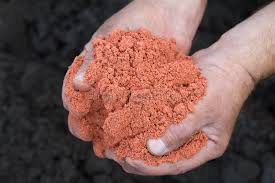
Sep . 15, 2024 08:05 Back to list
Best NPK Fertilizer for Turf
Choosing the Best NPK Fertilizer for Turf A Guide to Healthy Lawns
When it comes to maintaining a lush and vibrant lawn, the right fertilizer is key. NPK fertilizers, which contain three essential nutrients—nitrogen (N), phosphorus (P), and potassium (K)—play a critical role in turf management. Understanding what these nutrients do and how to select the best NPK fertilizer for your turf can lead to a greener, healthier lawn.
Understanding NPK Ratios
The NPK ratio on fertilizer packages indicates the percentage by weight of nitrogen, phosphorus, and potassium. For instance, a fertilizer labeled 20-5-10 contains 20% nitrogen, 5% phosphorus, and 10% potassium. Each nutrient serves a specific purpose
- Nitrogen (N) Promotes lush, green growth and is crucial for leaf development. It encourages photosynthesis, making it essential for overall plant health. - Phosphorus (P) Integral for root development and flower formation. It helps stimulate the growth of new plants and is particularly beneficial in establishing new lawns.
- Potassium (K) Enhances overall plant health, increasing drought resistance and disease tolerance. It aids in the development of strong stems and helps with the overall stress response of the turf.
Factors to Consider When Choosing NPK Fertilizer
1. Soil Test Before selecting a fertilizer, conduct a soil test. This will provide insights into the nutrient levels already present in your soil, helping you choose a fertilizer that addresses any deficiencies.
2. Turf Type Different grass types have varying nutrient needs. For instance, cool-season grasses generally require higher nitrogen levels in the spring and fall, while warm-season grasses thrive with more potassium during the summer. Select an NPK fertilizer that aligns with the specific needs of your grass type.
best best npk fertilizer for turf

3. Seasonal Timing Timing is crucial when applying fertilizers. In spring, a higher nitrogen content is ideal to promote growth after winter dormancy, while in the fall, a balanced or higher potassium fertilizer can help prepare the turf for the colder months.
4. Application Method NPK fertilizers are available in various forms, including granular and liquid. Granular fertilizers are often slow-release, providing nutrients over time, while liquid fertilizers can act quickly. Choose based on your lawn care schedule and preference.
Recommended NPK Ratios for Turf
While specific needs can vary, general recommendations include
- For New Lawns A ratio of 10-20-10 can support root development and establishment. - For Established Lawns A ratio of 20-5-10 (higher nitrogen focus) is suitable for promoting leafy growth in spring.
- For Fall Fertilization A ratio of 5-10-30 can help strengthen the turf and improve winter resilience.
Conclusion
Choosing the best NPK fertilizer for your turf is essential for achieving a healthy, green lawn. By understanding the roles of nitrogen, phosphorus, and potassium, considering your turf type and soil conditions, and timing applications correctly, you can enhance your lawn’s vitality. Remember to tailor your choice to the specific needs of your turf, ensuring that your lawn stays lush and beautiful throughout the seasons. Happy gardening!
-
Organic 10-10-10 Fertilizer | Balanced Plant Nutrients
NewsJul.31,2025
-
Premium Amino Acid Fertilizer | Rapid Plant Growth Booster
NewsJul.31,2025
-
10 10 10 Fertilizer Organic—Balanced NPK for All Plants
NewsJul.30,2025
-
Premium 10 10 10 Fertilizer Organic for Balanced Plant Growth
NewsJul.29,2025
-
Premium 10 10 10 Fertilizer Organic for Balanced Plant Growth
NewsJul.29,2025
-
Premium 10 10 10 Fertilizer Organic for Balanced Plant Growth
NewsJul.29,2025
